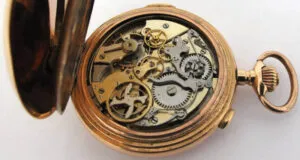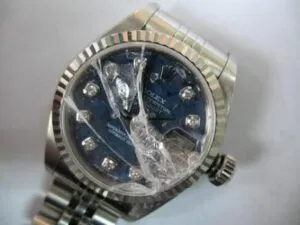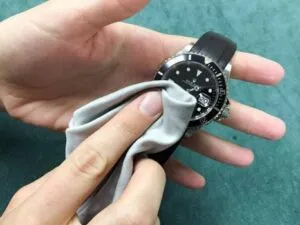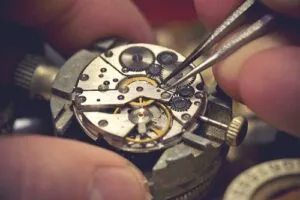There are thousands of watchmakers around the world who come up with hundreds of different designs for their timepieces. However, across the board, there are only three main types of watch movements those items use, and we’re going to learn everything about them today. Regardless of whether you’re looking to purchase a new watch or you’ve stumbled on this article, and you just want to learn more, the information below should make everything clear.
What is the Movement
The movement, also known as the caliber, is the heart and soul of any timepiece. It is what luxury watchmakers put all of their energy into and gives a watch it’s true uniqueness. The term encompasses all of the internal parts of a watch that make it function. It derives it’s name from the fact that it has moving parts. There are 3 typical kinds of movements in watch making: Quartz, Mechanical, and Automatic. Each has their own unique qualities and benefits.
Quartz
The Japanese watchmaker Seiko invented the quartz watch movement in 1969, and it has since become one of the most popular in the world. Traditional watches relied on mechanical movements, but the quartz concept uses a battery. The second hand of the watch moves in individual ticks, and that is all you need to know.
Both low-cost and expensive watches use the quartz movement these days, so it is no indication of quality or workmanship. Some watchmakers and their customers prefer to use a battery, and that helps to ensure the device keeps perfect time.
Of course, there can be issues when the battery needs to be replaced, and so it’s always sensible to check the watch against other clocks or timepieces to ensure it’s running correctly.
Benefits:
- Perfect time
- Easy to use
- Durable
- Cheaper to make
- Low maintenance
Mechanical
Watchmakers have used mechanical movements since watches first hit the market. It is the traditional method that remains popular today. Lots of people think mechanical watches are high-quality, and while that is usually the case; it’s not always true. So, use some common sense!
Unlike quartz movements, mechanical watches use energy from a spring to power the device. In most instances, watch owners will need to wind a mainspring occasionally to ensure the watch keeps perfect time.
Through a system of gears and springs, energy is transferred that powers the watch hands.
Benefits:
- Built to last
- No need for batteries
- Aesthetics (mechanical watches tend to look more appealing)
- Durable
Automatic
Lastly, we come to automatic movements. Watches that use automatic movements work in much the same way as their mechanical counterparts. The only real difference is that you don’t need to wind them.
In most instances, automatic watches will wind themselves using kinetic energy. Watchmakers add a metal weight to their parts called a rotor. As the wearer moves their wrist, the rotor spins, and that helps to generate the energy required to wind the mainspring.
That means people who purchase automatic watches will never have to wind them manually, and they’ll never have to replace batteries.
Benefits:
- No winding required
- No battery required
- High-quality items
- Low maintenance
- Durable
- Long-lasting
Types of Watch Movements Conclusion
From the information on this page, you should now have a better understanding of the different watch movements and how they work. Hopefully, you will now find the process of identifying the best new watch much more straightforward than you otherwise would have done. Understanding the movement is also helpful in understanding how the watch should function if you should need work done on it.






